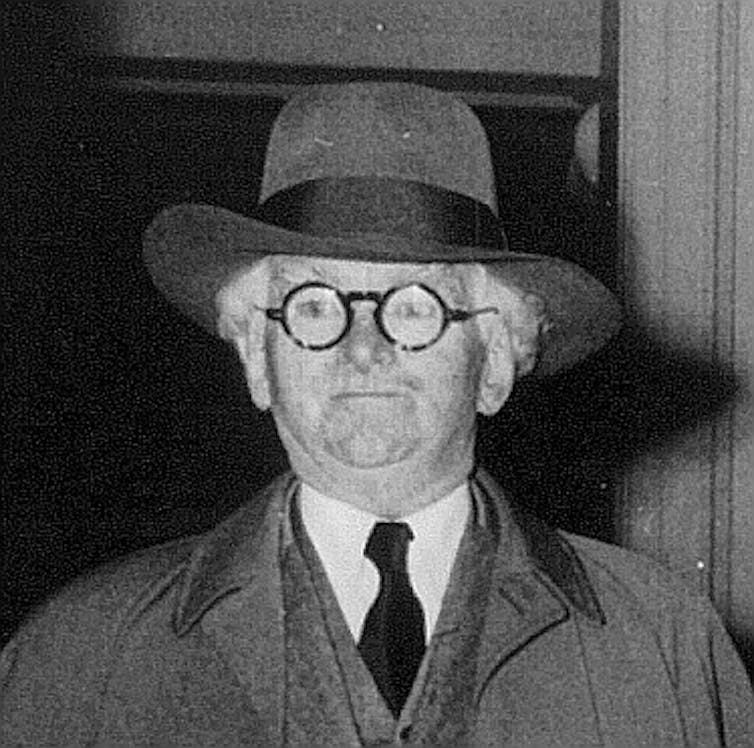White politicians were coercing African-Americans to vote long before civil rights
During a recent campaign rally in Tennessee, Donald Trump claimed that most African-Americans have been voting for the Democratic Party for over a century. He told supporters, “African-Americans vote for Democrats, for the most part. Vast majority. They’ve been doing it for over a hundred years.”
A number of commentators have pointed out that Trump’s comment is historically inaccurate because most African-Americans in the south could not vote until the Voting Rights Act was passed in 1965. Additionally, many African-Americans who could vote before the 1960s – located mostly in the north – were supporters of the Republican Party, the party of Lincoln and emancipation. This was especially true before Franklin Roosevelt introduced the New Deal during the Great Depression, but well into the 1960s moderate-to-liberal Republican candidates still won sizeable shares of the black vote.
Yet while Trump’s statement was clearly ignorant, he did accidentally stumble into an overlooked part of American history. In Tennessee, where he made his comments, African-Americans have indeed been voting – and voting Democratic – for more than a century. But this isn’t a grand tradition of multiracial democracy; it’s part of a history of machine politics.
White political bosses exploited black Tennesseans in the early 20th century to secure their own power. In fact, paradoxically, bosses used the institutions of the segregationist Jim Crow regime designed to deny African-Americans’ access to the ballot as a means of coercing them to vote for Democratic candidates.
This played out on a grand scale in Tennessee’s largest city, Memphis, which to this day has the state’s greatest share of black residents. In the first half of the 20th century, Memphis politics were dominated by local Democratic Party leader E H “Boss” Crump, who was described by Time magazine as “the most absolute political boss in the US”. Crump personally selected nearly every Memphis mayor and municipal leader, as well as many statewide politicians, from roughly 1909 until 1948.
In order to do this, Crump allowed African-Americans to vote.
The machine at work
Crump paid black residents’ poll taxes and coerced them into supporting his candidates as a bloc in exchange for protection from physical violence. The Colored Democrats Club of Memphis was described as “the African-American wing of the Crump organisation”.
This protection was of vital importance for black Memphians who had been terrorised by the city’s white population for decades. While guaranteeing security from physical violence is a basic function of the modern state, many parts of the US existed in a condition of little less than racialised anarchy until well after World War II. Public officials refused to protect citizens from physical harm on the basis of race.
And so it went in Memphis. In reaction to the presence of black federal soldiers in the city in 1866, a white riot erupted: the mob murdered 46 black residents, raped five black women, and burned all 12 of Memphis’s black schools, four black churches, and 91 homes.

Crump suppressed the Klan and prevented lynchings so long as African-Americans voted for his Democratic candidates, but he remained personally committed to white supremacy, abandoning Harry Truman in the 1948 election in protest at Truman’s support for civil rights.
He was also prepared to permit violence against black citizens who did not follow his political imperatives. When Reverend George Long invited union leader A. Phillip Randolph to speak to his black congregation about trade unionism in 1944, ignoring Crump’s instructions, he was badly beaten by white thugs. Crump turned a blind eye.
No illusions
Because of its relatively high proportion of black voter registration, Tennessee was one of only three states in the former Confederacy not to receive any coverage under Section 5 of the Voting Rights Act, which placed areas with historically low African-American electoral participation under heightened federal surveillance of changes to electoral law. In 1960, the average proportion of African-Americans registered to vote in the south was 30%, but in Tennessee it was as high as 60%. African-Americans in Memphis probably voted at higher rates than anywhere else in the pre-Voting Rights Act south.
This should not be mistaken for evidence that a multiracial democracy predated the Civil Rights era. Like many African-Americans in the north, black southern voters were dependent on the forbearance of violent and corrupt white-dominated political machines. These organisations made only minor concessions but otherwise fundamentally preserved the segregation and discrimination that African-Americans were forced to endure.
![]() Until the mid-20th century, many essential features of a democracy – free and fair elections, multiparty competition, universal franchise, free assembly and speech – were withheld from millions of US citizens. For that reason, it is impossible to describe the US as having been a full democracy for any more than five decades. This fact should be basic to every American’s understanding of their country’s development – but many (white) Americans prefer to imagine their country as one of the world’s oldest democracies. In fact, it only joined the club relatively recently.
Until the mid-20th century, many essential features of a democracy – free and fair elections, multiparty competition, universal franchise, free assembly and speech – were withheld from millions of US citizens. For that reason, it is impossible to describe the US as having been a full democracy for any more than five decades. This fact should be basic to every American’s understanding of their country’s development – but many (white) Americans prefer to imagine their country as one of the world’s oldest democracies. In fact, it only joined the club relatively recently.